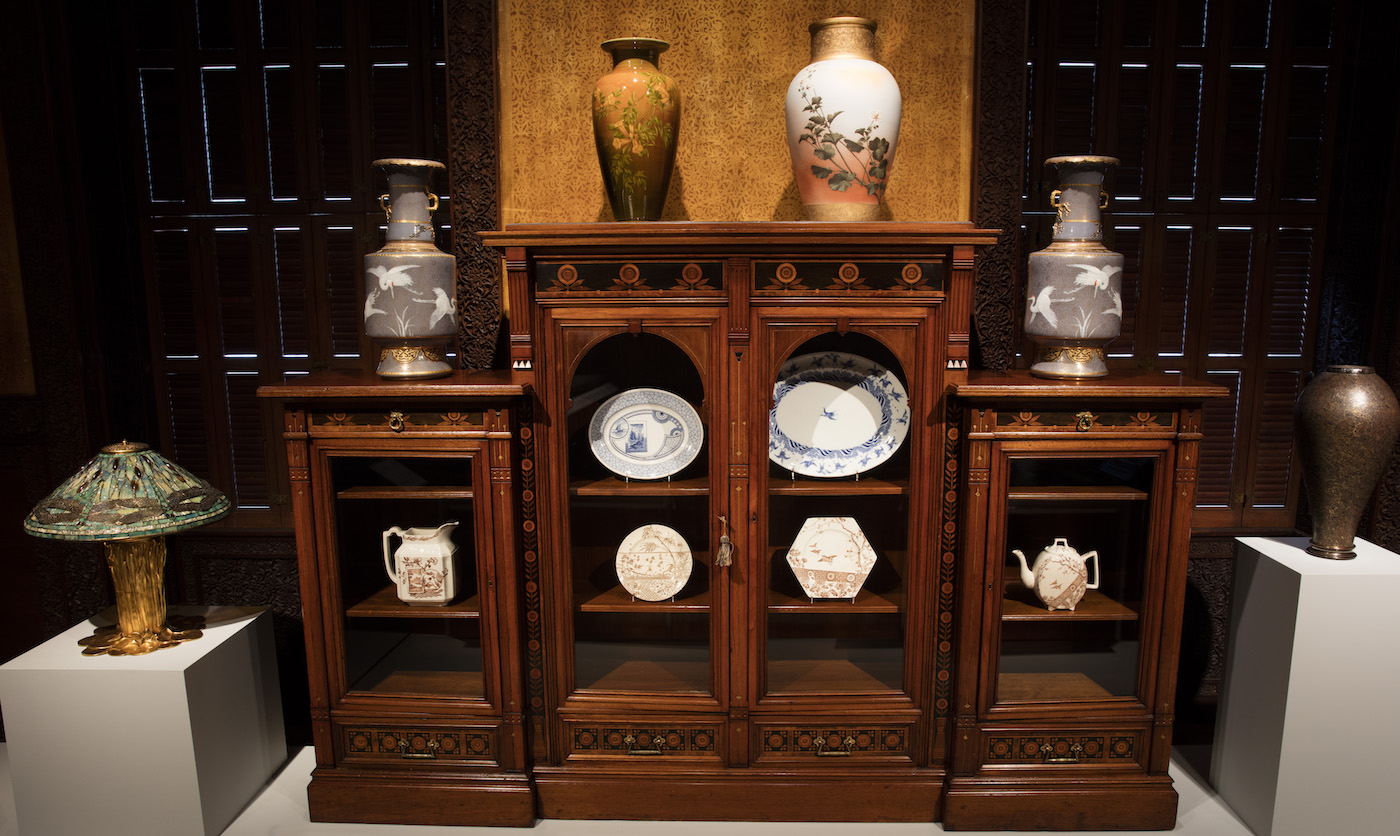Passion for the exotic: Japonism


Passion for the Exotic: Japonism explores the newfound influence of Japan on Western design in the late 19th century. A closed society until 1854, Japan ended its self-imposed isolation after American Commodore Matthew C. Perry led a fleet of armed steamships into Japanese ports and secured a trade treaty. Subsequently, Japanese exports such as metalwork, ivories, lacquerwork, woodblock prints, ceramics and textiles flooded the marketplace, providing inspiration with their wealth of distinctive decorative elements, many drawn from nature. As part of a broader interest in “exotic” cultures during the late 19th century, newly available Japanese design sources were soon joined by those of India to help create a European and American Aesthetic Movement.
Showcasing nearly 50 works from the permanent collection installed in the Teak Room, this focused exhibition celebrates the inspired dialogue between Western design and Japanese aesthetics.
One of Cooper Hewitt’s greatest treasures, the Teak Room now hosts a series of special exhibitions dedicated to the era of its creator Lockwood de Forest. The room represents the most complete existing de Forest architectural interior in America still situated in the its original site. Its style is notably different from the rest of the house except for the trim of Andrew Carnegie’s bedroom, now a gallery in the Hewitt Sisters Collect exhibition next door. In the Teak Room, the Indian influence is evident in the patterned wall stenciling lacquered in yellow. It creates a golden light that is reminiscent of Indian latticed screens. Although the walls and ceilings were painted on canvas on site, the carved teak, including that of the built-in cabinet, came from de Forest’s studio in India, using primarily native designs that he adapted.
America’s leading Aesthetic Movement champion of Indian design, designer and painter Lockwood de Forest (1850–1932) created the Teak Room, which served as the Carnegie family library. The room displays de Forest’s passion for the exotic, and defines his role in creating an Indian style of interior decoration in late nineteenth-century America. During this time collectors and painters flocked to the Middle and Far East for examples of extraordinary craftsmanship, inspiration for interior decoration, and unusual settings to paint. Lockwood de Forest travelled with American painter Frederic Church in Greece and the Middle East before setting out in 1881 to India. There, de Forest remained over a year establishing a studio guided by the Jain merchant Muggunbhai Hutheesing in the city of Ahmedabad. In addition to overseeing de Forest’s studio, Hutheesing employed master craftsmen to create decorative teak wood and brass panels designed or approved by de Forest, which the designer then exported to the United States for his and Tiffany’s use in aesthetic interiors.
Passion for the Exotic: Japonism is made possible in part by The Richard H. Driehaus Foundation.